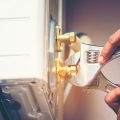Introduction to EICR
If you own a property in the UK, whether its your main home or a buy-to-let investment, understanding the Electrical Installation Condition Report (EICR) is crucial. An EICR is an official document provided after a thorough inspection and assessment of the electrical installations within a property. Its primary purpose is to ensure that all electrical systems—including wiring, sockets, fuse boards, and fixed appliances—meet current British Standards for safety. The report highlights any potential hazards, deterioration, or non-compliance with regulations, helping homeowners and landlords identify necessary repairs or upgrades before they become more costly issues.
Why EICR Matters for UK Property Owners
The importance of an EICR goes beyond ticking a legal box. Faulty electrics are a leading cause of house fires in the UK, making regular inspections vital for protecting both people and property. For landlords, an up-to-date EICR is now a legal requirement when letting out residential properties; failing to comply can result in hefty fines and invalidated insurance. Homeowners also benefit from peace of mind, knowing their families are safe from hidden electrical dangers. Below is a quick overview of why an EICR matters:
| Who Needs an EICR? | Why Is It Important? |
|---|---|
| Homeowners | Ensures household safety, identifies potential fire risks, maintains property value |
| Landlords | Legal requirement, protects tenants, prevents prosecution & fines |
Legal Requirements for Homeowners and Landlords
Understanding your legal obligations regarding EICRs is crucial whether you own your own home or let property in the UK. The regulations have changed significantly in recent years, with a particular focus on improving electrical safety standards for tenants. Let’s break down what you need to know.
What the Law Says
For landlords in England, it is now mandatory to have the electrical installations in their properties inspected and tested by a qualified person at least every five years. This applies to all new tenancies from 1 July 2020 and existing tenancies from 1 April 2021. Homeowners are not currently legally required to obtain an EICR, but it is strongly recommended, especially when buying, selling, or after major renovations.
EICR Frequency and Responsibility Table
| Type of Property | Who is Responsible? | How Often? |
|---|---|---|
| Private Rented (England) | Landlord | Every 5 years or at change of tenancy |
| Homeowner-Occupied | Homeowner (Recommended) | Every 10 years or at sale/purchase |
| HMOs (Houses in Multiple Occupation) | Landlord | Every 5 years |
Key Legal Steps for Landlords
- Ensure an EICR is carried out by a qualified electrician.
- Provide a copy of the report to existing tenants within 28 days and to new tenants before they move in.
- If requested, supply the local authority with a copy of the report within 7 days.
Consequences of Non-Compliance
Councils can impose fines of up to £30,000 for failing to comply with EICR regulations. It’s also likely to invalidate landlord insurance if you don’t keep up-to-date records. Staying on top of these checks not only keeps you on the right side of the law but ensures your property remains safe and habitable for everyone involved.

3. What Does an EICR Involve?
An Electrical Installation Condition Report (EICR) is a thorough check-up for your propertys electrics, designed to spot potential hazards and ensure everything meets UK safety standards. During an inspection, a qualified electrician will examine the fixed wiring, consumer unit (fuse box), sockets, switches, and light fittings throughout the property. The process is systematic and aims to highlight any issues that could put you or your tenants at risk.
What Electricians Check During an EICR
| Component Checked | Purpose of Inspection |
|---|---|
| Consumer Unit (Fuse Box) | Ensures proper protection devices are in place and functional |
| Circuit Wiring | Checks for wear, damage, or outdated materials |
| Sockets & Switches | Tests condition, earthing, and secure connections |
| Light Fittings | Inspects integrity and suitability for use |
| Earthing & Bonding | Confirms correct grounding to prevent electric shocks |
Common Issues Identified During EICR Inspections
- Outdated consumer units lacking RCD protection (essential for modern safety)
- Damaged or frayed wiring that could cause fire hazards
- Poor or missing earthing and bonding arrangements
- Overloaded circuits due to too many appliances on one ring main
- Sockets and switches showing signs of overheating or wear
The EICR Process Step-by-Step:
- The electrician conducts a visual assessment of all accessible electrical components.
- They carry out live and dead tests to assess wiring integrity and protection devices.
- The results are documented in the EICR report, noting any C1 (danger present), C2 (potentially dangerous), or C3 (improvement recommended) observations.
This structured approach not only helps spot existing problems but also highlights areas where DIY fixes could be unsafe or non-compliant with UK regulations. Knowing what to expect during an EICR can help homeowners and landlords budget more efficiently by planning for necessary repairs or upgrades in advance.
4. How to Choose a Qualified Electrician
When arranging an EICR for your property, selecting the right electrician is vital. Not only does this ensure your electrical installation is checked thoroughly, but it also guarantees compliance with UK regulations. Here’s what every homeowner and landlord needs to know when searching for a qualified professional.
Tips for Finding the Right Electrician
- Look for NICEIC Registration: In the UK, electricians registered with NICEIC (National Inspection Council for Electrical Installation Contracting) or similarly recognised bodies like NAPIT or ELECSA are assessed regularly for competence and safety standards.
- Verify Qualifications: Always ask to see proof of qualifications. Qualified electricians should hold Level 3 Certificates in electrical installation and be up-to-date with the latest BS 7671 wiring regulations.
- Check Experience with EICRs: Not all electricians are experienced in conducting EICRs. Ask how many reports they have carried out and whether they are familiar with residential properties similar to yours.
- Read Reviews and Get Recommendations: Check online reviews from UK-based platforms such as Trustpilot or Which? Trusted Traders, or ask friends and neighbours for recommendations.
Why Proper Qualifications Matter
EICRs must be carried out by someone competent and authorised. This is not only a legal requirement under UK law (especially for landlords), but it also protects you from faulty inspections that could leave your property unsafe or invalidate insurance claims.
Comparison Table: Registered vs Unregistered Electricians
| NICEIC-Registered Electrician | Unregistered Electrician | |
|---|---|---|
| Qualifications Checked | Yes | No guarantee |
| Regular Assessment | Yes | No |
| Insurance Backed Guarantee | Often included | Rarely included |
| EICR Accepted by Councils & Insurers | Yes | No |
Top Tip for Budget-Conscious Homeowners & Landlords:
If you’re looking to save money without compromising on safety, always gather multiple quotes from local NICEIC-registered electricians. Avoid choosing solely based on price—make sure you verify credentials first. Sometimes local authorities offer lists of approved contractors, which can help you find trustworthy professionals at competitive rates.
5. EICR Outcomes and Next Steps
Once your EICR inspection is complete, you’ll receive a detailed report outlining the condition of your electrical installation. Understanding the codes used in the report is crucial for UK homeowners and landlords, as it will help you decide on the right course of action—whether that’s a quick DIY fix or calling in a certified electrician. Here’s what you need to know:
EICR Codes Explained
| Code | Meaning | Recommended Action |
|---|---|---|
| C1 | Danger present, risk of injury | Immediate action required; do not attempt DIY—call a professional electrician straight away. |
| C2 | Potentially dangerous | Urgent attention needed; some simple issues (like broken sockets) may be DIY-friendly if you’re competent, but always err on the side of caution. |
| C3 | Improvement recommended | No immediate danger; often suitable for confident DIYers (e.g., replacing outdated fittings), but seek guidance if unsure. |
| FI | Further investigation required | A professional should investigate further—DIY fixes are not appropriate until cause is identified. |
How to Interpret Your Report
If your EICR only lists C3 items, you’re in luck: these are recommendations for improvement rather than urgent hazards. A mix of C2 and C3 means prompt action is needed, while any C1 or FI code should be treated as an emergency and left strictly to qualified electricians. Always keep your report safe as proof for insurers, tenants, or when selling your property.
Budget-Friendly DIY Fixes You Can Tackle Yourself
- Tightening loose socket screws: Use a screwdriver to safely secure faceplates (ensure power is off first).
- Replacing cracked light switches or sockets: Buy like-for-like replacements from local hardware shops; follow manufacturer instructions and double-check power is isolated.
- Swapping out old-style light fittings: Upgrade to modern LED pendants for energy savings, but stick with simple swaps only.
- Labelling consumer unit circuits: Use sticky labels so future maintenance is easier—no tools required!
When to Call in a Pro?
If your report lists C1 faults, FI codes, or if you’re ever unsure about your own abilities, don’t risk it—hire a NICEIC-registered electrician. This ensures all repairs meet current BS 7671 wiring regulations and keeps you compliant with UK law. Even with minor jobs, safety should always come first!
6. Saving Money on Electrical Safety
Keeping your property safe and compliant with EICR requirements doesnt have to break the bank. With some smart DIY maintenance, regular checks, and energy-saving habits, you can cut costs while maintaining a high standard of electrical safety. Here are practical tips tailored for UK homeowners and landlords:
DIY Maintenance Tips
- Regular Visual Inspections: Routinely check sockets, switches, and light fittings for signs of wear, cracks, or overheating.
- Tighten Loose Connections: If you notice any loose faceplates or switch covers, tighten screws gently with an insulated screwdriver.
- Test RCDs Monthly: Press the test button on your Residual Current Device (RCD) every month to ensure it trips as expected.
Energy-Saving Strategies
- Switch to LED Bulbs: Replacing traditional bulbs with LEDs lowers both running costs and heat output, reducing fire risk.
- Smart Timers & Plugs: Use timers or smart plugs to automatically turn off appliances when not in use—ideal for landlords managing empty properties.
Cost-Effective Upgrades
| Upgrade | DIY Difficulty | Estimated Savings per Year |
|---|---|---|
| Install draft excluders around doors/windows | Easy | £15-30 |
| Add plug-in energy monitors | Easy | £20-50 (by identifying waste) |
| Replace faulty socket faceplates | Moderate | Avoids costly repairs later |
Preventing Expensive Surprises at Your Next Inspection
- Create a simple maintenance logbook—note dates of inspections, repairs, and replacements.
- If you spot repeated tripping or flickering lights, consult a qualified electrician before issues escalate.
Tackling small problems early and adopting these budget-friendly practices will keep your home or rental property up to EICR standards—saving money and giving peace of mind come inspection time.


